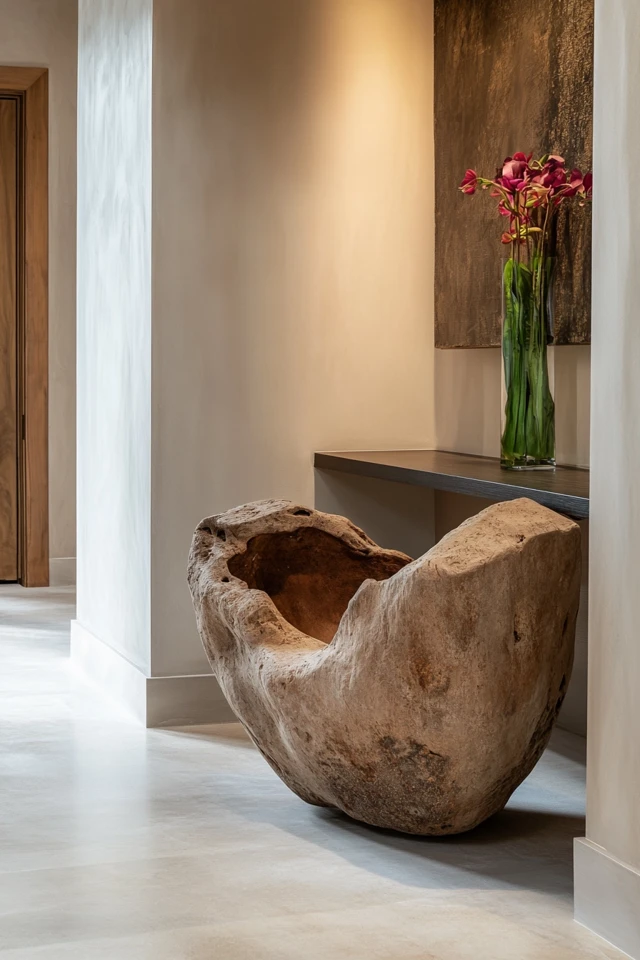Introduction
When designing a space, the shapes and forms you choose play a significant role in the overall mood and functionality of the room. While straight lines and sharp edges can create a modern, structured look, they can also feel rigid or impersonal when overused. This is where natural shapes come in—organic, flowing, and asymmetrical forms inspired by nature. By incorporating these shapes into your design, you can introduce a sense of softness, movement, and serenity that transforms your space into a warm, inviting retreat.
I first discovered the power of natural shapes when redesigning my home office. The space originally felt cold and clinical, dominated by angular furniture and hard materials. By swapping in a round, live-edge wood desk, adding a rug with a wavy pattern, and incorporating decor with curves and organic forms, the room became a more soothing and inspiring environment. These small changes not only softened the room but also created a sense of flow and ease that made spending time there more enjoyable.
In this guide, we’ll explore how to use natural shapes to soften your interiors and create dynamic, harmonious spaces. Whether you’re designing a cozy living room, a calming bedroom, or a welcoming dining area, these tips will help you infuse your home with the beauty and balance of nature.
The Perfect Design for You
Using natural shapes is ideal for anyone who:
- Wants to create a softer, more inviting atmosphere in their home.
- Loves organic, nature-inspired design elements that feel timeless and calming.
- Feels their space is too rigid or cold due to straight lines and angular furniture.
- Is looking for ways to balance structured design with softer, more dynamic details.
Imagine a living room where a circular coffee table anchors the space, complemented by an abstract wall mirror and curvy vases. Or picture a dining room with a live-edge wood table, soft draped curtains, and a light fixture that mimics the shape of hanging leaves. These spaces exude comfort, harmony, and elegance, demonstrating the transformative effect of natural shapes.
Whether you lean toward minimalist, rustic, or eclectic styles, incorporating natural shapes will help you achieve a more balanced and visually appealing design.
Picture Gallery
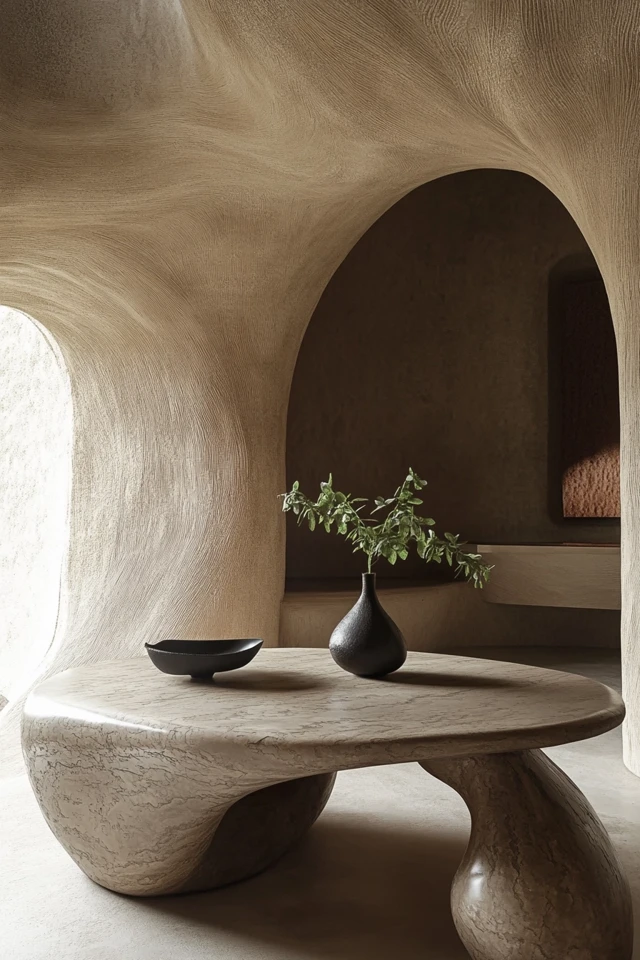
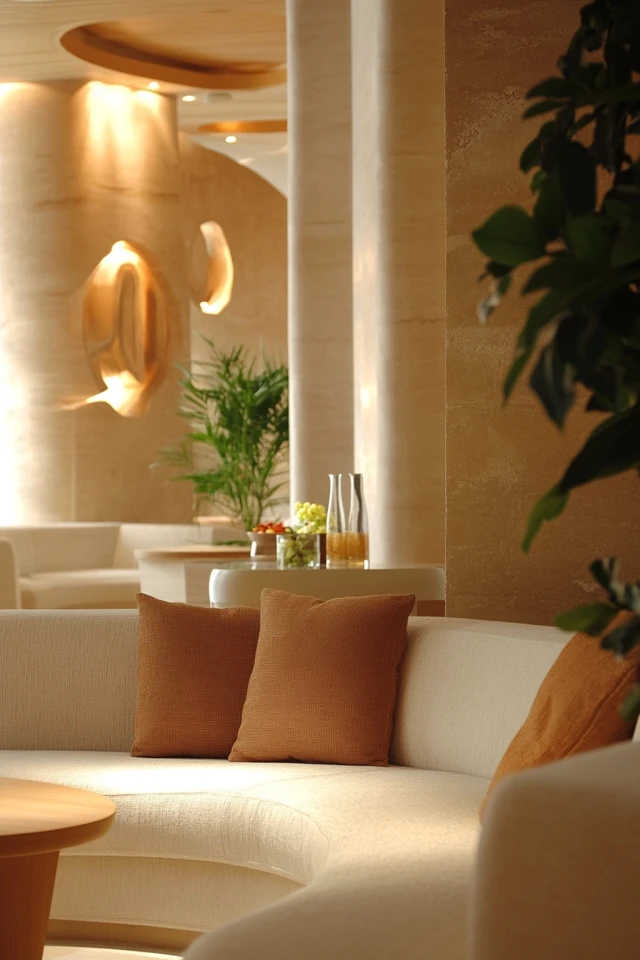
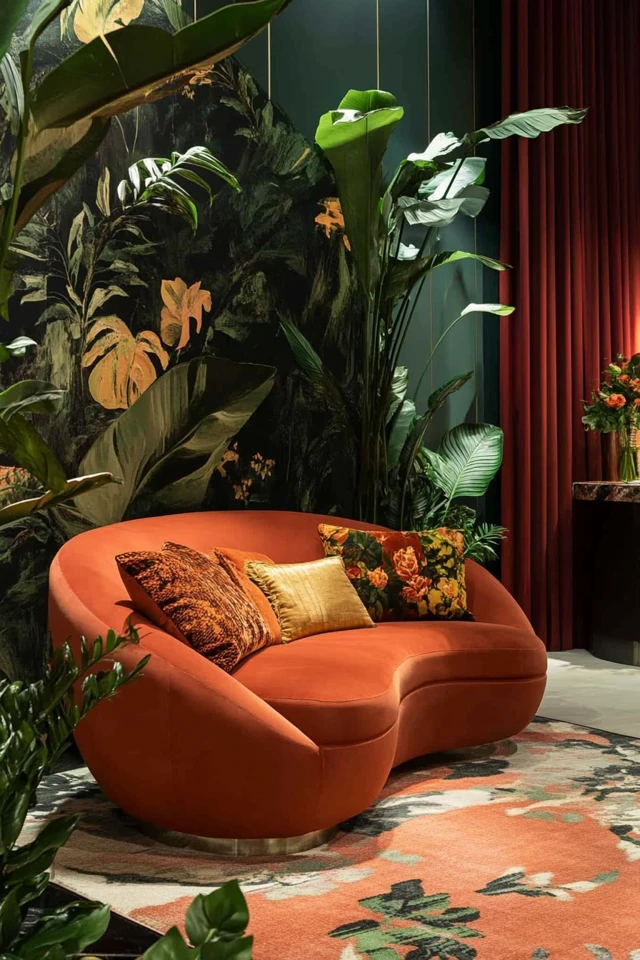
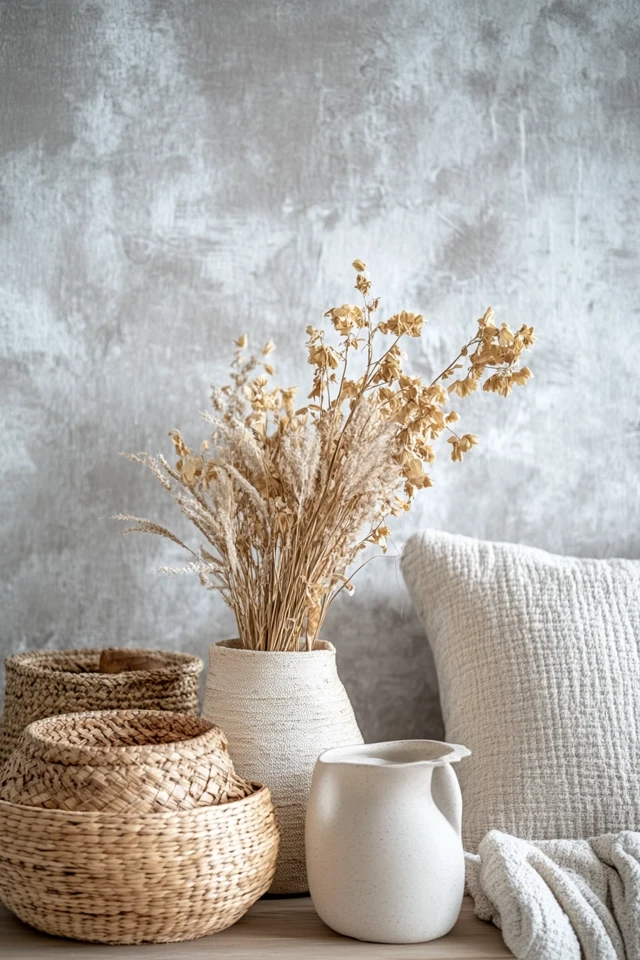
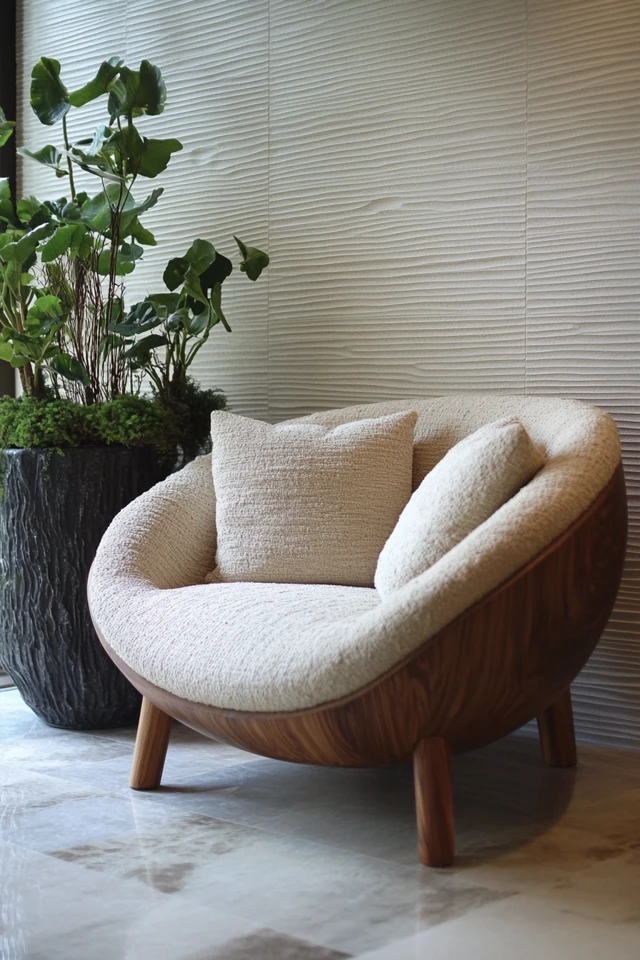
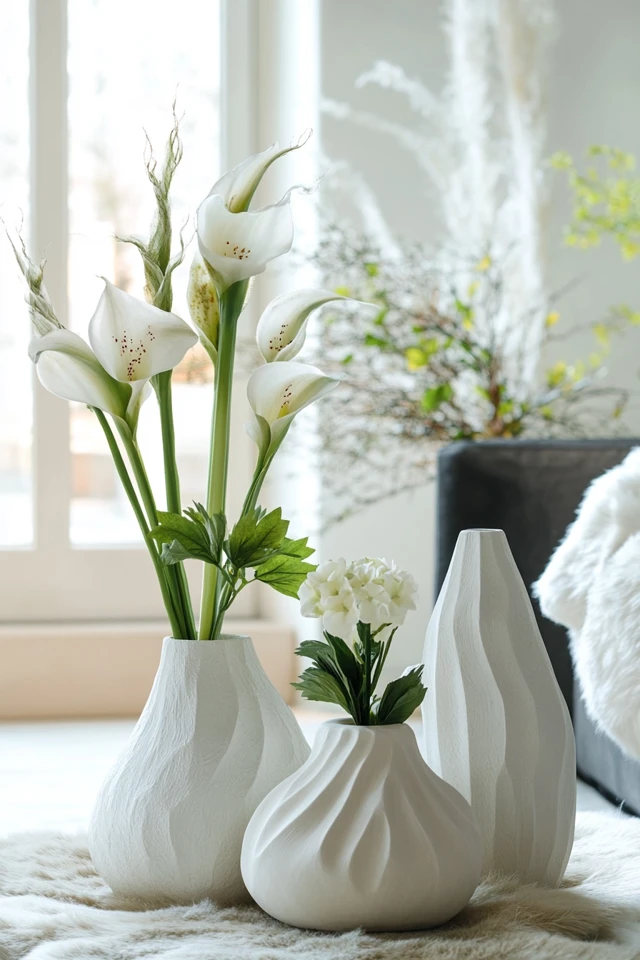
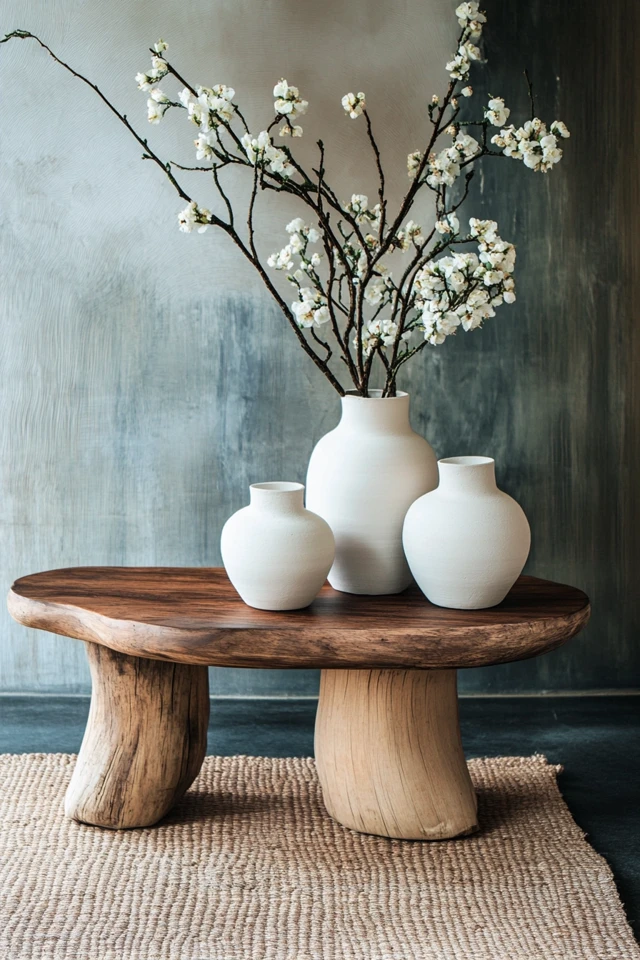
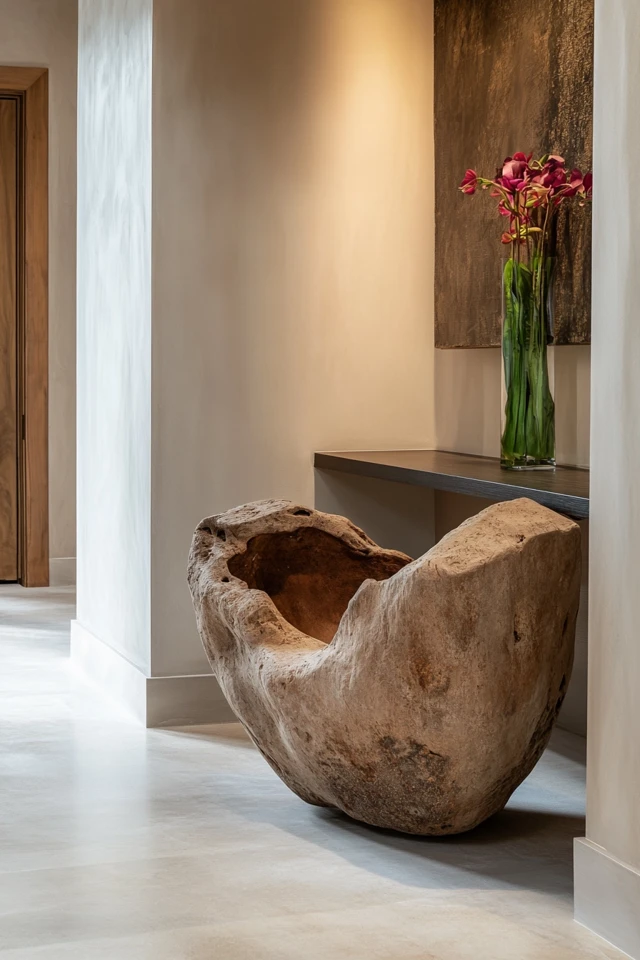
Why Natural Shapes Work
Natural shapes mimic the forms and curves found in the environment, from rolling hills to flowing rivers. These organic designs evoke feelings of relaxation and harmony, making them a perfect addition to interior spaces. Here’s why they’re so effective:
- Adds Softness: Organic shapes counteract the hardness of straight lines and sharp angles, creating a more approachable and comfortable space.
- Encourages Movement: Flowing forms and asymmetry guide the eye, adding a sense of movement and energy to your design.
- Evokes Nature: Natural shapes connect us to the outdoors, bringing a sense of tranquility and grounding to indoor spaces.
- Enhances Balance: Pairing natural shapes with structured elements creates a dynamic contrast that feels intentional and well-balanced.
- Timeless Appeal: Unlike trends that come and go, nature-inspired forms have a universal and enduring aesthetic.
Designers often describe natural shapes as the “yin” to the “yang” of architectural lines. They add depth, texture, and fluidity to interiors, making them more visually engaging and emotionally resonant.
How to Use Natural Shapes for Soft Room Dynamics: Step-by-Step
1. Incorporate Curved Furniture
- Choose furniture with rounded edges and soft curves to introduce a sense of flow:
- Opt for sofas with curved backs, circular coffee tables, or rounded armchairs.
- Look for headboards or benches with scalloped or arched designs.
- These pieces instantly soften the overall look of the room and make it feel more inviting.
- Example: A round dining table paired with curved chairs creates a cozy, conversational atmosphere in the dining area.
2. Add Organic Textures and Materials
- Bring natural shapes to life with textures and materials inspired by nature:
- Use live-edge wood tables, stone countertops, or rattan furniture to mimic the irregularities found in nature.
- Incorporate woven rugs, jute baskets, or macrame wall hangings to add tactile interest.
- These elements add warmth and authenticity, grounding the space in organic beauty.
- Example: A live-edge wood coffee table with uneven edges becomes a statement piece that radiates natural charm in a living room.
3. Layer Rounded Decor Accents
- Small decor items are an easy way to introduce natural shapes without major changes:
- Use round or oval mirrors, circular trays, and abstract sculptures.
- Display vases, bowls, or planters with curvy or irregular forms.
- Mix smooth and textured finishes to create depth.
- Example: On a console table, pair a wavy ceramic vase with a rounded stone sculpture and a circular tray to create a cohesive vignette.
4. Incorporate Patterns Inspired by Nature
- Use patterns that reflect natural shapes to add movement and visual interest:
- Choose rugs, throw pillows, or wallpaper with flowing lines, floral motifs, or wavy designs.
- Avoid overly geometric patterns, opting instead for abstract or freeform styles.
- Patterns inspired by water, foliage, or clouds can subtly bring the outdoors inside.
- Example: A bedroom with a wavy-patterned rug and abstract botanical-print pillows feels serene and connected to nature.
5. Focus on Lighting Fixtures
- Lighting is a powerful way to introduce natural shapes into your space:
- Look for fixtures with curving arms, leaf-like designs, or irregular glass shades.
- Use pendant lights or chandeliers with flowing or asymmetrical forms.
- These designs add both functionality and artistic flair to your room.
- Example: A dining room with a cascading light fixture that mimics water droplets adds elegance and movement to the space.
6. Use Asymmetry to Create Flow
- Natural shapes are rarely symmetrical, so embrace irregular forms in your design:
- Choose decor and furniture with uneven edges or asymmetrical silhouettes.
- Arrange furniture and accessories in a way that feels organic rather than perfectly aligned.
- Asymmetry adds a sense of spontaneity and natural rhythm to your interiors.
- Example: In a living room, place an off-center floor lamp with a curvy base next to a slightly irregularly shaped coffee table for a dynamic composition.
7. Bring in Natural Art and Sculptures
- Incorporate art pieces that celebrate the beauty of organic shapes:
- Look for sculptures, wall art, or pottery with flowing, abstract designs.
- Choose artwork that highlights themes of nature, such as landscapes or botanical forms.
- These elements serve as focal points that draw attention to the room’s softer dynamics.
- Example: A large piece of abstract wall art featuring curved, flowing lines becomes a statement feature in a minimalist living room.
8. Incorporate Plants and Greenery
- Plants are a natural way to introduce organic shapes and bring life to a space:
- Use potted plants with cascading leaves, like pothos or ferns, to add a sense of movement.
- Choose planters with rounded or wavy forms to complement the natural theme.
- Plants not only soften the room but also improve air quality and create a sense of well-being.
- Example: A corner with a tall fiddle-leaf fig in a rounded ceramic pot instantly feels more organic and inviting.
9. Choose Curved Architectural Features
- If possible, incorporate natural shapes into the architecture of your space:
- Use arched doorways, curved alcoves, or circular windows to add organic lines.
- Opt for built-in shelving with wavy or asymmetrical designs.
- Architectural curves create a lasting sense of softness and harmony.
- Example: A bedroom with an arched nook above the bed becomes a calming focal point that enhances the room’s natural flow.
10. Balance With Straight Lines
- To prevent the space from feeling overly soft or unstructured, balance natural shapes with clean, straight lines:
- Use angular furniture or geometric rugs sparingly to ground the design.
- Let natural shapes take center stage while straight lines act as subtle contrasts.
- This balance ensures the room feels dynamic and well-rounded.
- Example: A living room with a circular coffee table and curved armchairs is anchored by a rectangular area rug for a harmonious blend of shapes.
FAQ
1. Can natural shapes work in modern spaces?
Yes! Natural shapes pair beautifully with modern designs, softening sharp lines and adding warmth to sleek interiors.
2. How do I avoid overloading a room with natural shapes?
Use natural shapes as accents or focal points, balancing them with straight lines or neutral tones for a cohesive look.
3. What’s the best way to introduce natural shapes on a budget?
Start small with decor items like vases, mirrors, or planters, or add an organic-patterned rug or throw pillow for an affordable update.
4. Do natural shapes work with bold colors?
Absolutely! Bright, bold colors can enhance the playful and dynamic quality of natural shapes, especially in eclectic or modern designs.
5. Can I combine natural shapes with geometric patterns?
Yes! Pairing the two creates an interesting contrast—use geometric patterns sparingly to let the natural shapes shine.
Variations
- Minimalist Elegance: Use subtle curves and organic textures in a neutral palette for a calm, understated look.
- Rustic Warmth: Combine natural wood furniture with live-edge details and earthy tones for a cozy, grounded feel.
- Mid-Century Modern: Pair curved furniture with clean lines and bold colors for a retro yet timeless aesthetic.
- Bohemian Vibes: Layer flowing forms with eclectic patterns, plants, and handmade accents for a relaxed, artistic style.
- Coastal Serenity: Incorporate wavy patterns, light wood, and soft blues to mimic the natural flow of the ocean.
How to Showcase It
- Living Rooms: Use curved sofas, round coffee tables, and flowing-patterned rugs to anchor the space.
- Bedrooms: Incorporate arched headboards, scalloped bedding, and circular mirrors for a serene retreat.
- Dining Rooms: Opt for live-edge wood tables or round dining sets paired with soft lighting.
- Bathrooms: Use curved vanities, oval mirrors, and organic-shaped tiles to create a spa-like ambiance.
- Outdoor Spaces: Choose furniture and decor with flowing lines and natural materials to blend seamlessly with the environment.
Occasions to Feature It
- Everyday Living: Soften the edges of high-use spaces for comfort and relaxation.
- Seasonal Updates: Introduce organic textiles and decor like wavy throws or vases for a fresh look.
- Entertaining Guests: Use natural shapes to create a welcoming, elegant atmosphere in dining and living areas.
- Post-Renovation Touches: Soften newly remodeled spaces with curves and flowing accents.
- Creative Workspaces: Add natural forms to inspire creativity and reduce stress.
Conclusion
Natural shapes are the key to creating soft, harmonious room dynamics that feel both inviting and visually interesting. By incorporating organic forms in furniture, decor, and architectural features, you can transform any space into a retreat that balances movement, warmth, and flow.
Whether you’re refreshing a single room or reimagining your entire home, these tips will help you embrace the beauty of nature-inspired design. So, experiment with curves, textures, and asymmetry, and watch as your space comes to life with the timeless elegance of natural shapes!

